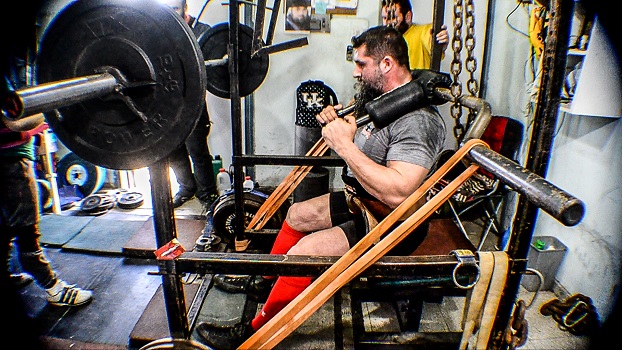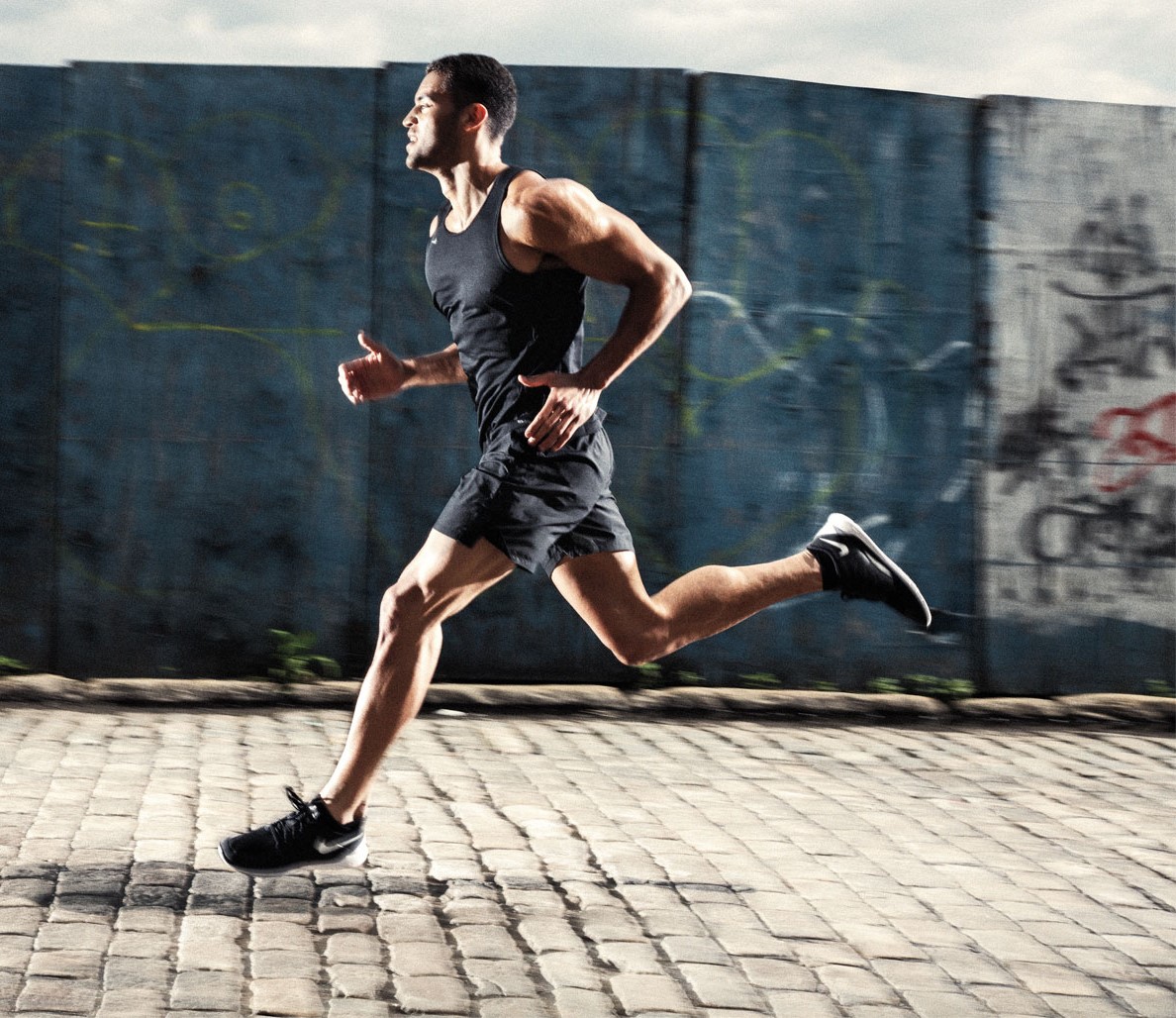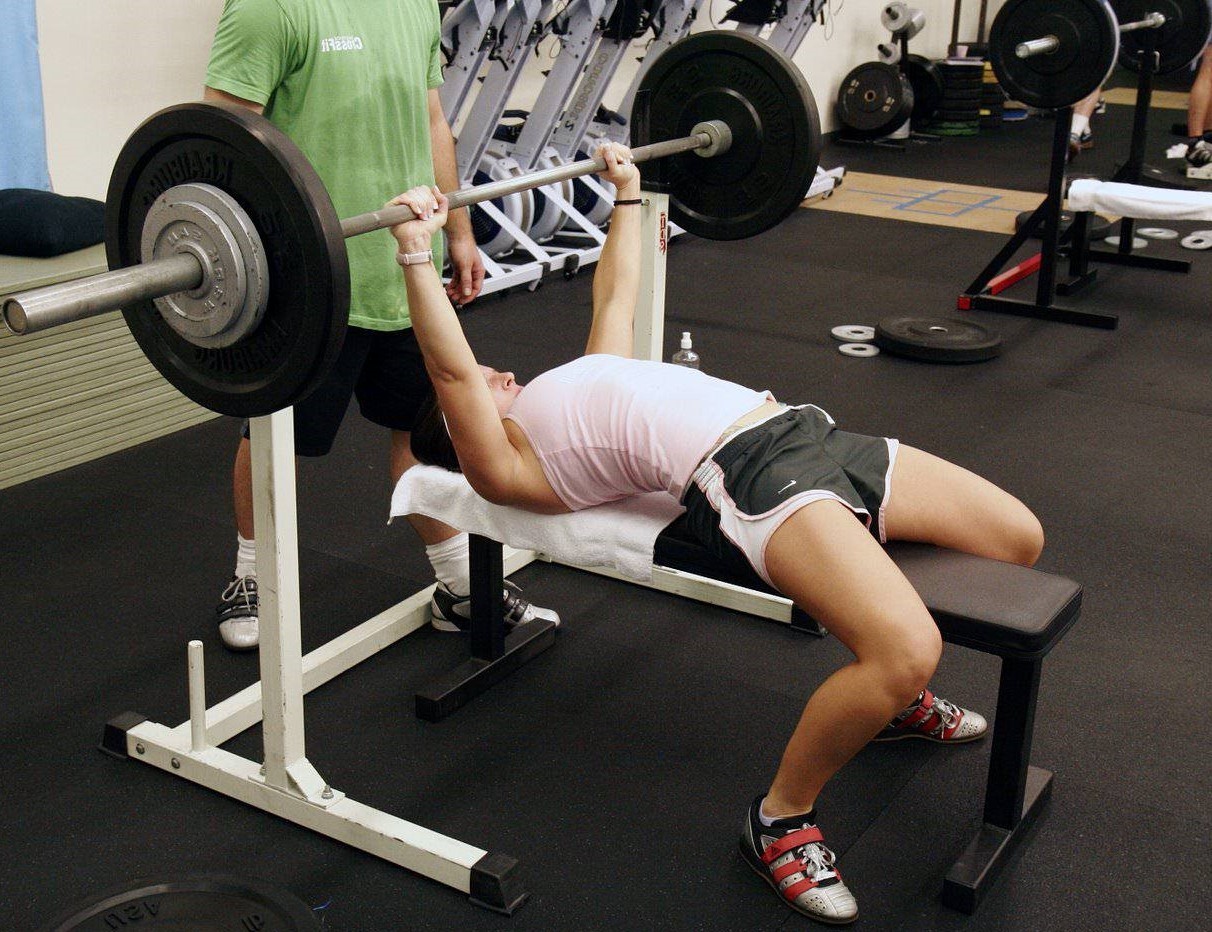While powerlifting is a sport of just three lifts, and most powerlifters (especially beginners) spend most of their training time on the big three, accessory exercises are as important to a powerlifter as butter on bread. There are many different accessory exercises for powerlifting, but I will go over the most important ones for the purposes of addressing common weaknesses, blasting past sticking points, and overloading a lift.
Accessory exercises for powerlifting can be performed with machines, barbells, dumbbells, resistance bands, or even just
one’s bodyweight. It’s important to understand that a good accessory exercise
will complement the squat, bench, and deadlift. Don’t get confused: at the end
of the day, everything a powerlifter does in the gym is to get better at
squatting, at bench pressing, and at deadlifting. That includes direct work to
improve these lifts, like simple variations of the same exercise (front squats,
Spoto presses, paused deadlifts), as well as exercises that indirectly support
movements to improve the big three (like split squats, heavy dips, and reverse
hyperextensions).
Defining Accessory Exercises
Another way of categorizing accessories and
other lifts is to take the Tier system. Exercises in any given training session
or program can be split into different tiers.
- Tier 1 exercises are either competition lifts or lifts that are very similar that you are using to get better at the competition lift (like a safety bar squat, a close grip bench press, or a deficit deadlift).
- Tier 2 exercises are lifts that address weaknesses you perceive in your Tier 1 exercise. They should be picked not necessarily to balance out the Tier 1 pick but to complement it.
- Tier 3 exercises directly improve upon the work you are doing in Tier 2 – NOT Tier 1. If your Tier 2 in a heavy bench press session in a close-grip bench press, then your Tier 3 exercises will probably be triceps and shoulder isolation movements, and curls to train supination.
I split accessories into three general categories. The first is lift variations, which include a number of useful ways you can change a lift in order to train through a weakness. The second is an overloaded lift, which can help prepare you for a bigger PR and get you past the psychological stress of confronting a weight you’ve never lifted before. The third is a collection of lower-tier accessory movements that help build muscle or strength in ways that isn’t possible through the other lifts.
When picking accessory exercises, you need
to either follow a loose template program or design your own program with room
for exercise selection. You can also pick a program you’ve been running and
change it up. If you’re a beginner, however, I have some important advice for
you regarding accessory exercises for powerlifting:
- If your form is good and you’re
making progress, keep doing what you’re doing. Usually, beginner and
intermediate lifters just need to squat, bench, and deadlift more, until they
reach a certain level of strength. - Avoid changing things too often
and too frequently. A good coach will be able to help you figure out your
programming and exercise selection, but if you’re flying solo it’s safer to err
on the side of caution and just stick to the big 3 and ask for form checks to
identify sticking points and useful accessories.
With that out of the way, let’s hop into some
accessories.
Squat Accessories
In powerlifting, the squat requires you to
squat down below parallel (hips under the knee joint) with the barbell across
your back. It’s up to you where on the back you’re positioning the bar, and
it’s up to you to pick a stance and grip you’re most comfortable or efficient
with.
Geared lifters will typically pick wider
stances and take a more hip-dominant bar path to help their suit stretch and
hit depth. Raw lifters will squat the way the human body lets them squat – first,
with their quads, and then with their hips, fighting to get upright in the
final stretch of the lift.
When picking accessories, it’s important to
know what it is you’re trying to achieve. Do you have a sticking point? Is your
form breaking down at a point that suggests a specific weakness? Or do you just
want a couple of hypertrophy accessories to round out a training day after you’re
through with your heavy sets? With all of these questions in mind, here are
three great choices to start with:
- Bulgarian Split Squats: With one leg on an elevated surface and the other planted firmly on the ground, Bulgarian split squats let you overload your quads with minimal back strength (work up to >50% of your squat 1RM over time) while taxing your glutes, adductors, and abductors. They also help you address unilateral weaknesses that might be contributing to hip shifts, knee pain, and other problems.
- Clamshells & Monster Walks/Hip Circles: These act as great warmup exercises and glute accessories for those with particularly inactive and weak glutes and abductors. Not only do they prime you for squats, but they can be used as finishers at the end of the week to build a stronger booty.
- Breathing Paused Squats: Done with 20-30% of your 1RM, to begin with, breathing paused squats get you more comfortable with the hole and improve your mobility through resistance-based stretching while taxing your core in the right way to teach you how to brace properly under a heavy load.
I’ve got a whole lineup of accessory exercises specifically for the squat if you need a wider selection of powerlifting accessory exercises to choose from.
Bench Press Accessories
While the bench press provides the smallest
boost to your total, it’s still an important lift, and many of my long-armed
brethren tend to neglect it early on in their powerlifting career to focus on
big jumps in the squat and deadlift.
But even if you aren’t short-armed and
barrel-chested, you can still build a powerful bench by training smart and training
often. In my experience, the bench press responds well to a lot of volume. It
also responds well to having incredibly strong triceps. Most people are weak
either just above the chest (not off the chest, but about halfway up) or in
their lockout. These accessories focus on addressing these two weak points, and
helping you build a monster bench:
- Close Grip Bench Press: People expect a strong bench press to require a thick chest, but the reality is that you need a thick everything: chest, shoulders, and especially arms. Insane triceps are what will build your bench, and the close grip bench press is the easiest and fastest way to train your primary pressing muscles.
- Heavy Rows: You should be able to row your max bench, ideally for reps. A strong heavy row not only helps build muscles that directly antagonize your pushing muscles (avoiding imbalances and injury) but helps build the foundation of stability that your torso needs to press big weight. No, your lats probably aren’t helping you press (unless you’re an equipped lifter), but a thick upper back helps puts extra kilos on your bench press.
- Spoto Press: Think of it as a paused bench press, but with the pause being a few centimeters off your point of contact. You can adjust exactly where and how you want to use this exercise depending on where in the bench press you slow down the most and feel weakest. It helps to take videos of your heavier sets and see exactly where you begin to struggle in a lift – sticking points occur just a few moments before the lift begins to slow down, so use that to identify where you need to pause in order to develop more strength.
If you want a greater selection of bench press accessory exercises, look no further than my personal list of accessories for better pressing.
Deadlift Accessories
The deadlift, probably the king of exercises, is very simple. There’s a heavy weight on the floor and you’re supposed to pick it up. Try not to get hurt. While simple at its core, it – like the other two lifts – can be immensely technical. Since I pull predominantly conventional, most of my training is geared towards improving the conventional deadlift – but the deadlift accessories I mention below are great for both conventional and sumo pullers.
At its heart, the deadlift is a movement
that starts with the quads and hamstrings and is finished with the erectors.
Selecting exercises that specifically strengthen these two prime movers is
critical.
- Good Mornings: Good mornings, when done correctly (no spinal flexion), are a great way to target both the glutes and the erectors, and even get a little work in with the upper back. They’re a great squat accessory as well, but primarily help conventional lifters because it’s essentially the same movement as a Romanian deadlift, but with the weight loaded on the upper back rather than in one’s hands. Start light, record your sets, and focus on bracing.
- Deficit Deadlifts: Deficits are the best way to train explosiveness and strength out of the bottom of the lift. Your ideal deficit will depend on your height and leverages, but the more aggressive the deficit (while retaining form integrity), the more you’ll have to fight to get out of the bottom with your quads. The greater the deficit, the more you need to use your legs. Deficit deadlifts are meant to teach you to load your quads so you’re pressing the world away from you as you pull, and finish with your hips and glutes.
- Romanian Deadlifts: Romanian deadlifts are a posterior chain killer. Focus on minimal knee bend, maximum time under tension (high rep sets without resetting each rep), and an explosive lockout. They make for a great pair with deficits as the perfect duo for targeting the anterior and posterior muscles responsible for a strong deadlift (quads, hams, glutes, erectors).
If you want a bigger selection of deadlift accessory exercises to fill out your repertoire (including hyperextensions, rows, and more), check this list out.
Programming Your Accessory Exercises for Powerlifting
With so many accessory exercises to choose
from, it becomes important not to start cramming your program full of
accessories and exercises you don’t really need. The core of your training
should still be the competition squat, bench, and deadlift. While advanced
lifters benefit from taking a break from the big three to get proficient at
certain variations and come back even stronger to their competition lifts,
beginners and intermediate lifters should be focusing on high volume quality
work at varying intensities to hammer in form and get consistent in their
lifting.
I’ll stress again that no amount of accessory work will fix a bad squat, a bad bench, or a bad deadlift. You need to train in the fundamentals and focus on consistent form from an early point in your training. Don’t start playing around with lift variations until you’ve reached a certain level of proficiency in the big three, and rely on the simpler, isolation-style accessories to round out your training early on rather than mixing in several different squat, bench, and deadlift variations at a point in your training career when consistency and specificity are more important than ever.
That being said, once you feel comfortable with your form in the big three and are beginning to set up and hammer in your sets and reps flawlessly and without much thought, you can begin to incorporate days (or even entire training cycles) where you take a break from a competition lift to get proficient at a close variation to make new gains and reap the benefits of carryover.
When programming accessory exercises for powerlifting, always make them secondary to your main movement. Pick a main movement to work on for a whole training cycle (3-4 weeks, depending on how you structure your programs), and pick a secondary movement to work on after your main work is done (followed by smaller accessories to focus on hypertrophy or lagging muscle groups/isolated weaknesses).
Want to lift heavier and avoid injuries? 💪🔥
Download our FREE '5-Minute Warm-Up Routine for Maximum Lifting Performance' and get primed for every workout!
Click below to grab your copy now!👇
👉 Download the Free Guide




